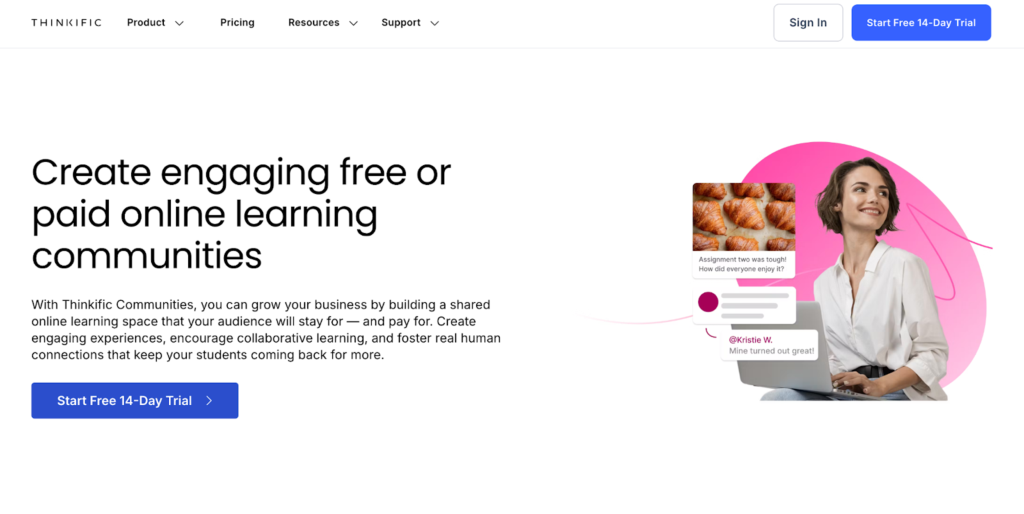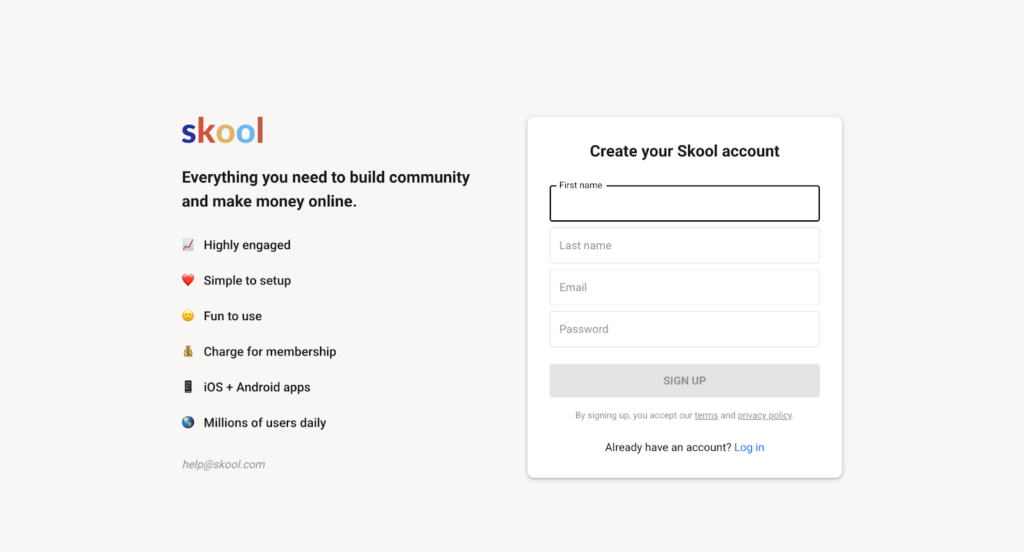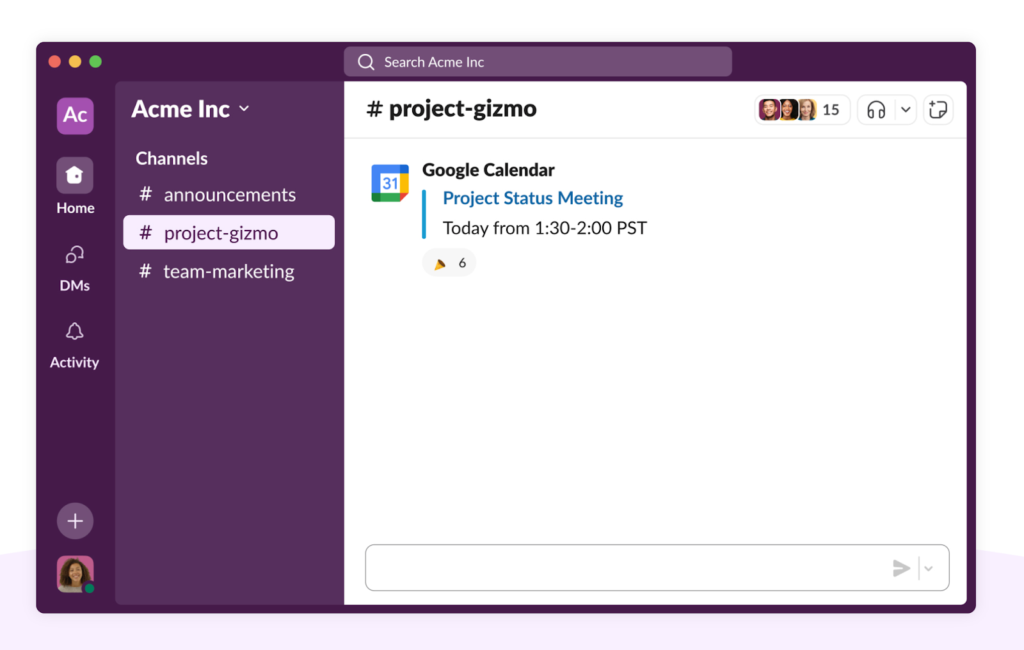You run an internet group and comprehend it’s including worth. Members are energetic, conversations are buzzing, and it feels such as you’re constructing one thing significant. However there’s an issue: your execs aren’t satisfied concerning the group’s influence on the enterprise’s backside line.
With budgets beneath scrutiny, there’s actual strain to point out precisely how your group drives enterprise outcomes. In case you can’t join engagement to ROI, there’s a danger your group may very well be on the chopping block.
Don’t fear; we’ve acquired you coated. On this article, we’ll break down tips on how to measure group engagement, monitor the precise metrics, and current strong knowledge that proves your group isn’t simply good to have; it’s a enterprise asset.
Skip forward:
What does engagement imply in a community-driven enterprise?
Why must you measure group engagement?
The right way to measure group engagement: 4 metrics to trace
The highest 5 instruments and platforms for monitoring group engagement
Group engagement is a enterprise development technique
What does engagement imply in a community-driven enterprise?
Engagement in a community-driven enterprise means group members see themselves as an extension of your model. They actively work together along with your content material — and one another — and are desperate to share and talk about concepts that form your model, whether or not on-line or offline.
It’s not about having a big viewers that merely consumes your content material or shares one-off responses. An engaged group will usually:
- Promote your model via word-of-mouth or referrals
- Vote or share suggestions on product modifications like new options
- Attend in-person occasions and even set up subgroups that assist them construct nearer relationships with like-minded group members.
For a community-driven enterprise, energetic engagement shapes selections, influences product improvement, and drives development via participation and suggestions.
Why must you measure group engagement?
With out monitoring engagement, you’re flying blind on how related, invested, and impactful your group actually is.
1. It makes it simpler to find and recruit associates and model advocates
Recruiting associates and model advocates as a medium-sized enterprise can price wherever from $500 to $2,000 month-to-month. Monitoring group engagement can slash these prices and velocity up recruitment considerably.
If you take note of who’s constantly sharing your content material, providing concepts, or serving to others in your group, it turns into a lot simpler to identify individuals who already love what you’re doing and recruit them as model ambassadors. These people don’t want a tough promote — they’re already on board. As an alternative of spending time and sources convincing strangers to advertise your model, you’ll be able to faucet into this current enthusiasm.
Recruiting these engaged group members into your affiliate or referral applications quickens recruitment and provides you a built-in group of advocates who genuinely consider in your model. Their pleasure is contagious, and it feels extra genuine once they unfold the phrase. This helps you attain new audiences and appeal to clients via word-of-mouth advertising.
2. It helps you validate new product concepts
Monitoring engagement is a low-cost, low-risk strategy to validate new product concepts earlier than rolling them out to a bigger viewers.
If you share a brand new idea and see plenty of optimistic responses, whether or not via feedback, shares, or direct suggestions, it’s a robust signal the thought has potential. Alternatively, if an thought falls flat or will get little traction, it’s a transparent sign there’s extra work to do earlier than going all-in.
This type of real-time validation saves each money and time. As an alternative of guessing what your viewers desires, you employ direct enter to create higher merchandise. It additionally reduces the danger of launching one thing that misses the mark, forcing you to tug it again or overhaul it later.
3. It’s simpler to trace the ROI of your group campaigns
Measuring engagement offers you concrete knowledge to point out how your group campaigns drive actual enterprise outcomes.
It’s simple to dismiss group as summary or “good to have,” but it surely instantly impacts income, model loyalty, and buyer retention. Monitoring engagement means that you can quantify that influence and make a compelling case for its worth.
Say you launched a UGC contest to advertise your new product. Monitoring engagement enables you to quantify its influence on enterprise metrics like leads and conversions. For instance, if a gross sales spike correlates along with your UGC marketing campaign, it’s an indication that this effort influenced model visibility and curiosity from prospects. With out measurement, these precious insights stay hidden, leaving you to depend on guesswork.
When you’ll be able to show the ROI of your group marketing campaign, it turns into simpler to safe management buy-in and sources to scale your efforts.
The right way to measure group engagement: 4 metrics to trace
To measure group engagement, you must set one clear aim in your group first. For instance, would you like your group to drive gross sales, or is it only a instrument for model consciousness?
Setting one clear aim offers you route and makes it a lot simpler to guage how nicely your group is performing. With out it, you’ll find yourself chasing random metrics that don’t let you know a lot about whether or not your group is transferring the needle the way in which you need.
When you’ve set your aim, the subsequent step is selecting a group engagement metric for measuring it. For instance, in case your aim is to drive leads and gross sales, you’ll deal with enterprise influence metrics like buyer lifetime worth. Alternatively, in case your group is primarily for strengthening relationships with current clients, you’ll monitor retention and development metrics like common retention.
Listed here are 4 key metrics for measuring group engagement:
1. Participation and interplay metrics
These metrics allow you to quantify group well being by monitoring the variety of individuals concerned in your group and the way typically they take part in discussions. You’ll find this knowledge in your group instruments, whether or not that’s social media or native platforms like Thinkific Communities.
Listed here are a number of participation metrics to deal with:
- Energetic Members: Variety of distinctive individuals over a particular time (e.g., day by day, weekly, month-to-month energetic customers).
- Direct Messages and Peer-to-Peer Interactions: One-on-one conversations that stem from group discussions. For instance, if members begin a non-public chat to dive deeper right into a shared subject, that counts as participation.
- Publish Frequency: Variety of posts, feedback, or discussions created by members.
- Occasion Attendance: Variety of individuals in community-hosted occasions (e.g., webinars, AMAs, meetups).
- Content material Contributions: Variety of user-generated posts, articles, or sources shared.
2. Content material engagement metrics
These metrics measure how individuals work together with particular posts — supplying you with a clearer sense of what resonates along with your viewers and what misses the mark. Armed with these insights, you’ll be able to refine your concepts to spice up engagement and the general high quality of your group conversations.
- Engagement per put up: The variety of likes, shares, and feedback on posts
- Time spent on platform or discussion board: How lengthy group members keep engaged
- Completion charges for content material/programs: The share of people that begin and end a chunk of content material or course (like an internet module, lesson, or tutorial).
- Click on-By way of Price: The share of people that click on in your put up when it seems on their social feed.
- Views and impressions: The share of people that noticed your content material (consciousness vs. precise interplay).
Like participation metrics, you will discover this knowledge in your group administration platform or software program — usually within the analytics dashboard or part.
3. Retention and development metrics
Retention and development metrics in group engagement measure how nicely you appeal to, maintain, and keep an energetic group over time. Listed here are crucial ones to trace.
- Member Retention Price: The share of members who keep energetic over a particular time or interval (e.g., month-to-month or quarterly). To calculate it, divide the variety of group members at first of a interval (like a yr) by the quantity on the finish, then multiply the end result by 100.
- Returning Member Ratio: The proportion of returning members versus new members throughout a given timeframe. To calculate it, divide the variety of returning members by the variety of new members and multiply the end result by 100. A low returning member charge is an indication that your group isn’t partaking sufficient to carry their consideration.
- Churn Price: The share of members who develop into inactive or go away the group. Calculating the churn charge is actually simple. Merely divide the variety of members who left your group inside a given interval by the variety of members you had at the beginning of the identical interval. Then, multiply the end result by 100.
- Whole Membership Development: The online enhance in group measurement (new members minus churned members).
To calculate it, you must subtract the variety of churned members from the variety of new group members. Divide the end result by the overall variety of members you had at a given interval (like a yr), and multiply the end result by 100.
- New Member Price: The variety of new group members becoming a member of over a set interval. It’s fairly simple to calculate — divide the variety of new members by the overall variety of members and multiply the end result by 100.
4. Enterprise influence metrics
These metrics measure how your group influences actual enterprise outcomes. Monitoring them is a good way to show group engagement ROI and get extra buy-in from enterprise stakeholders — corresponding to increased group advertising budgets.
So, what must you be monitoring? It finally will depend on your online business priorities, however you can begin from these:
- Group-driven gross sales: This consists of leads and purchases generated by group members. Share distinctive buy hyperlinks along with your group to trace and attribute their gross sales simply.
- Buyer lifetime worth (LTV) from engaged members: Measure how lengthy group members keep clients and the way a lot they spend over time. You’ll be able to calculate LTV by multiplying the common buy worth by the acquisition frequency and buyer lifespan.
- Referral and word-of-mouth influence: Arrange a referral or associates program to trace how group members drive new leads and buyer acquisition. This helps you quantify their affect on enterprise development.
The highest 5 instruments and platforms for monitoring group engagement
As talked about, group instruments and platforms have built-in dashboards that seize vital engagement metrics. For instance, Thinkific Communities has a complete dashboard the place you’ll be able to monitor metrics just like the variety of energetic group members and different participation metrics.
There are additionally third-party instruments for group engagement monitoring — particularly in case your aim is to affect enterprise outcomes. For instance, you’ll want a CRM instrument to measure lifetime worth for group members.
Let’s dig into all of those instruments additional.
1. Thinkific Communities: Finest for monitoring engagement insights from specialists and course creators

Thinkific Communities enables you to create shared on-line studying areas for an engaged viewers.
It’s good for specialists who wish to monetize their data whereas nurturing a carefully knit viewers. It additionally works nicely for manufacturers that supply buyer schooling programs and wish to create an area the place everybody can talk about the data they acquire and get peer help.
Prime options
- Group analytics dashboard
- Push notifications
- Help for programs and communities throughout the similar platform
Pricing: From $49 per 30 days; it additionally gives a 14-day free trial.
2. Skool: Finest for monitoring group interactions

If Fb Teams and an internet course platform had a brighter, extra organised child, the end result can be Skool.
Skool is a hybrid of an internet group, a course platform, and a membership hub in a single place. It’s designed to assist creators, coaches, and enterprise homeowners construct and handle communities whereas providing programs or unique content material.
Individuals prefer it as a result of it’s simple to arrange, retains the whole lot in a single place (as a substitute of juggling platforms), and encourages engagement via factors and leaderboards. It additionally has a clear, distraction-free interface, making it simple to make use of.
Prime options
- Gamification options like leaderboards
- Limitless group channels and teams
- Reside occasion scheduling
Pricing: From $99 per 30 days (per group)
3. Slack: Finest for analyzing message frequency and participation

Slack is a messaging platform designed to make communication simpler and extra organized. It was created for enterprise groups to collaborate with out counting on lengthy e-mail chains. Customers can create channels for particular subjects, ship direct messages, share recordsdata, and even begin voice or video calls — all inside a single platform.
Whereas it was constructed for office communication, many on-line communities now use Slack at no cost. It’s a well-liked selection for teams targeted on studying, networking, or shared pursuits as a result of it gives a clear, ad-free area to attach. Though the free model has some limitations (like restricted message historical past), it’s typically greater than sufficient for many group wants.
Prime options
Channels for devoted subjects, pursuits, and sub-groups
Huddles (Voice and video calls)
Pinned messages, bookmarks and emoji reactions
Pricing: From $8.75 per person/month; it additionally has a free plan.
4. Google Analytics: For measuring web-based group exercise

Google Analytics is a robust instrument for monitoring and understanding how individuals work together along with your web-based group. It offers detailed insights into customer behaviour, which might help you measure engagement, establish fashionable content material, and make data-driven selections to develop and enhance your group.
If you add the Google Analytics monitoring code to your group’s web site or platform, it collects knowledge on customer exercise. This knowledge is processed and displayed in stories, permitting you to watch and analyze key metrics, together with site visitors sources, web page views (to establish fashionable content material or sub-groups), and group engagement metrics.
Prime options
- Site visitors supply monitoring (natural, paid, social, referral, direct)
- Session period and engagement charge
- Viewers segmentation (by behaviour, location, and so on.)
Pricing: Free
5. Hubspot CRM: For group engagement scoring

HubSpot is a CRM instrument that may allow you to monitor how group engagement drives actual enterprise outcomes. It helps you see which group members develop into leads and, ultimately, paying clients — connecting your group efforts to key metrics like conversions and income.
With options like engagement scoring and call monitoring, you’ll be able to monitor each interplay — whether or not somebody attends an occasion, clicks an e-mail, or joins a dialogue. This provides you a transparent image of who’s actively partaking and the way these actions contribute to your online business targets.
Prime options
Exercise monitoring throughout a number of platforms and channels
Lead scoring primarily based on engagement and conduct
Reporting and analytics
Pricing: From $20 per 30 days
Group engagement is a enterprise development technique.
Group isn’t only a feel-good initiative; it’s a robust development technique. In case you’re investing time and vitality into constructing a group, you must monitor the way it’s impacting the enterprise. In any other case, it’s simple for others to see it as a enjoyable facet venture as a substitute of a critical development lever.
When you’ll be able to clearly present how your group contributes — whether or not that’s rising buyer retention, driving gross sales, or boosting model loyalty — it’s a lot simpler to get buy-in from stakeholders.
So, deal with the precise metrics, show the worth, and your group will develop into a key participant in driving enterprise success. Don’t have an internet group but? Begin constructing one right now with Thinkific Communities!
The put up The right way to Measure Group Engagement: Key Metrics for Specialists and Excessive-Development Groups appeared first on Thinkific.